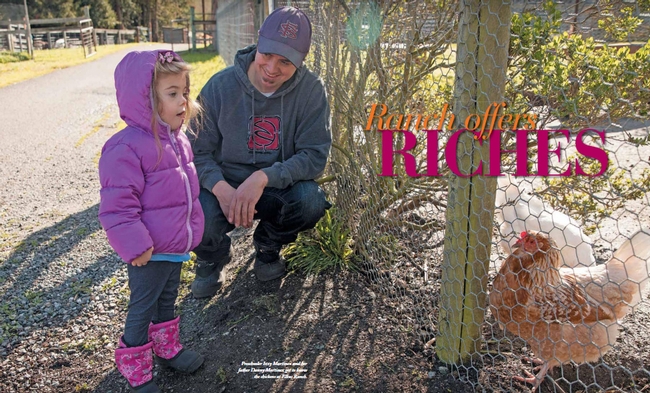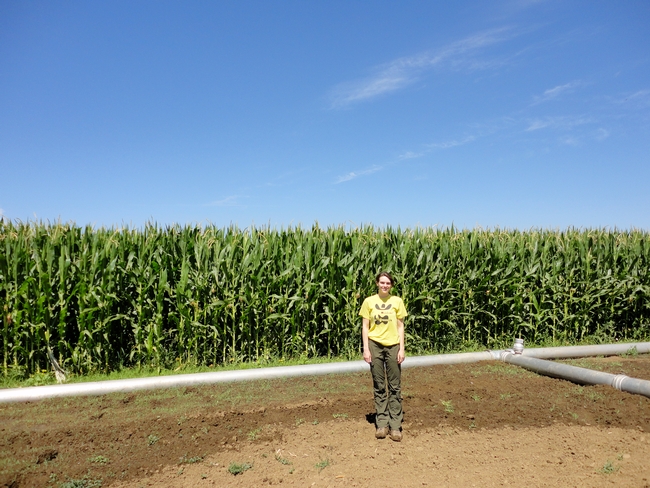Posts Tagged: ranch
Check Out the Open Farm Day in Vacaville on Saturday, Aug. 4
What's life like on the farm? If you're looking for something to do on Saturday, Aug. 4, the Pleasants Valley Agriculture Association (PVAA) of...
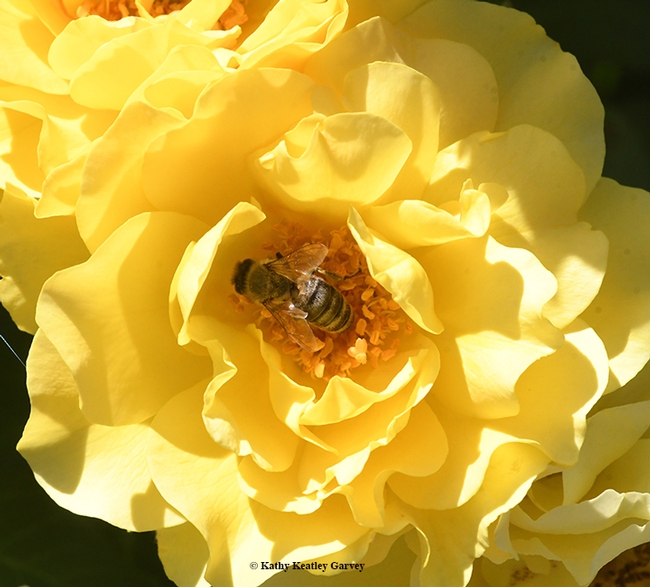
You're likely to see lots of bees at the Open Farm Tour, especially in the Morningsun Herb Farm nursery. (Photo by Kathy Keatley Garvey)
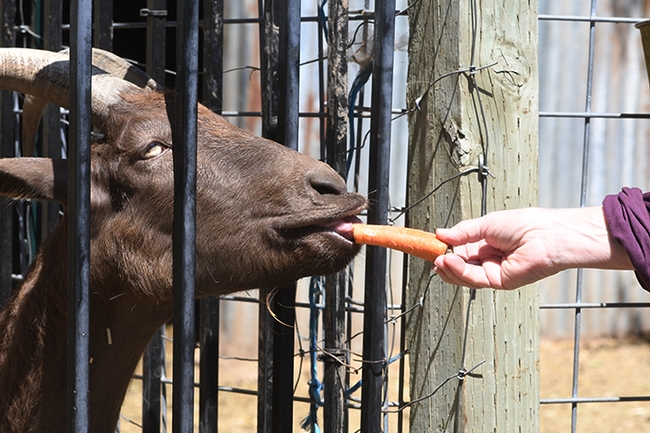
A goat at the Morningsun Herb Farm readily accepts a carrot. (Photo by Kathy Keatley Garvey)
UC ANR's Elkus Ranch is an outdoor classroom for local youth
Each year, about 9,000 kids visit the UC Agriculture and Natural Resources Elkus Ranch in Half Moon Bay for hands-on educational experiences in urban horticulture, nutrition, food safety, pest management, livestock management and food preservation, reported Sara Hayden in April 2018 issue of Half Moon Bay Magazine (the article begins on p. 16).
Hayden visited the ranch with photographer Jaime Soja when a group of preschoolers descended to explore the garden and meet the farm animals.
"They can taste and touch and smell things - feel the wool of a sheep or an egg, know where their food is from, where the clothing fiber comes from," said Kathi Baxter, UC Cooperative Extension environmental science educator at Elkus Ranch. "Ideally, kids would get the idea that space is necessary to grow food. We're hoping to plant that seed of stewardship here."
The Elkus family donated the 125-acre ranch in the 1970s as a gift for youth. The ranch's operating budget depends heavily on grants and donations.
For more, visit the Elkus Ranch website at http://ucanr.edu/sites/elkus_ranch.
A Field Day for Learning About Cover Crops and Beneficial Insects
So you're a rural landowner thinking about planting cover crops in your fields or orchards. And/or, you want to learn more about beneficial...
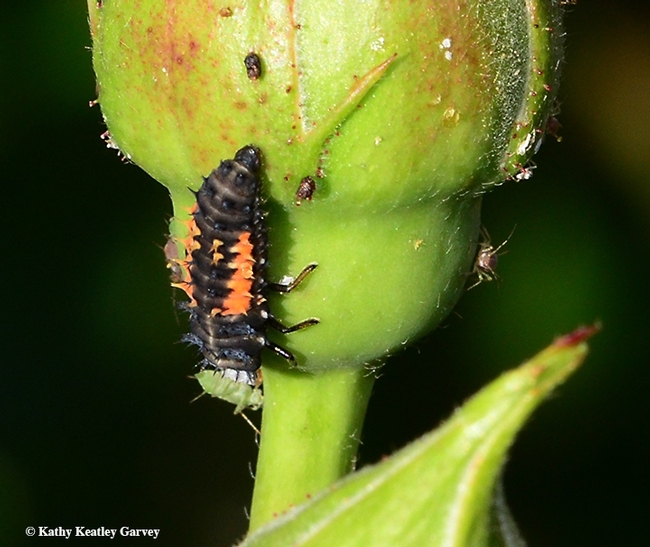
Larva of lady beetle munching on an aphid. (Photo by Kathy Keeatley Garvey)
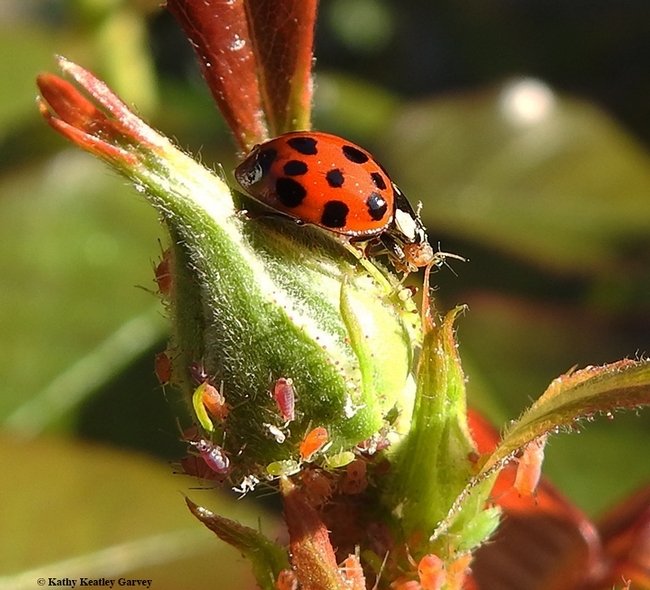
A multi-colored Asian beetles snags an aphid. (Photo by Kathy Keatley Garvey)
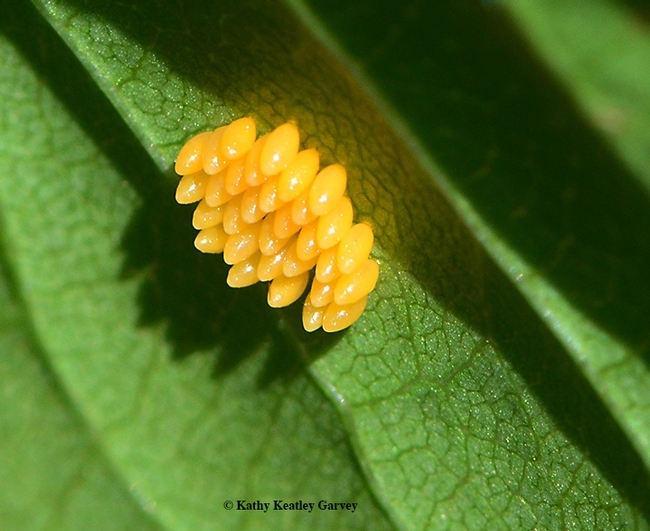
These are lady beetle eggs. (Photo by Kathy Keatley Garvey)
In a new study biochar helps yields, but only in the short term
Adding biochar to a farm's field is an irreversible decision, so understanding its long-term impacts is essential for farmers to make informed decisions.
Biochar, a charcoal created from organic materials burned at high temperatures and added as a soil amendment, has been shown to increase pH and soil fertility in areas with more weathered, acidic soils, like the tropics. But a new study shows its impact on productive soils like those in California's Central Valley may be quite different.
Findings from a four year study conducted at the Russell Ranch Sustainable Agriculture Facility at UC Davis showed an increase in corn yields in the second year after adding biochar, but through different means than have been observed elsewhere.
The study, published in the journal Agriculture, Ecosystems and Environment, used biochar made from walnut shells, cooked at 900°C from an orchard in Winters, Calif. Biochar was added to a plot rotating tomato and corn crops at the Russell Ranch Sustainable Agriculture Facility at UC Davis, a long-term research facility focused on using farm management practices similar to those used at commercial farms.
Short term boosts in yields
“A lot of biochar lab studies look at intricacies of how biochar changes nitrogen cycling, so I was very focused on looking at that in the field,” says Deirdre Griffin, Ph.D. candidate in soils and biogeochemistry at UC Davis and lead author of the study.
But instead of a change in the nitrogen cycle, the biochar affected potassium, phosphorous, and calcium in the soil, causing an 8 percent increase in corn yields. The increase, however, didn't happen until the second year after application.
That delay may be due to biochar's hydrophobic nature — it repels water when first in the ground, and may only start to interact with soil after significant time. After year two, the yield benefits of biochar dropped off, and by year four showed no difference compared to plots without biochar.
“The benefits that we saw were from direct fertilization from biochar, in which case growers might be able to see the same boost in yield if they applied a little more fertilizer,” says Griffin. “We didn't see much change in the soil properties that could have more lasting effects. But those things could still be impacted in the coming years as the biochar continues to age.”
To see continued yield increases like these, growers may need to apply biochar regularly, which is not its intended purpose and may pose challenges for growers. Biochar can be dusty, dispersing black soot as it is applied. Growers can wet biochar to limit its dust, but without overcoming that challenge, repeatedly adding biochar to the soil may limit its appeal.
Many biochars, many functions
Like compost, different biochars act differently in the soil. Different sources (type of shell or other organic material), treated at different temperatures, and added to varying soil types can all impact what benefits a grower may see from biochar.
Carbon sequestration, not included in this study, is broadly understood as a benefit of biochar, and some research is looking at its potential to pull heavy metals from soils.
“When biochar research started flourishing, people started seeing positive results in tropical systems and got excited about it,” says Griffin. “Because of our soils and agriculture, we don't necessarily see the same benefits in our systems. But every biochar is different, and we need to understand their characteristics, to engineer them for different systems and different purposes. And we're still working to understand that.”
Griffin's study is ongoing and Russell Ranch and will continue to provide insights on biochar's impacts over time.
Having a long-term study that uses realistic farm practices will help build the understanding of the role of biochar in already fertile soils, and have strong data showing how biochar really acts in the long run, so farmers making the irreversible decision to add biochar know exactly what they are investing in.
More information on biochar can be found on the UC Division of Agriculture and Natural Resources' Biochar Blog, the Solution Center for Nutrient Management, and the Biochar Database managed by associate professor Sanjai Parikh at UC Davis.
Carpenter Bee: Beneficial Insect or Pest?
Let's face it--some folks are not fond of carpenter bees. Honey bees, yes! Bumble bees, yes! Carpenter bees, uhh, not so much. Ever seen carpenter...
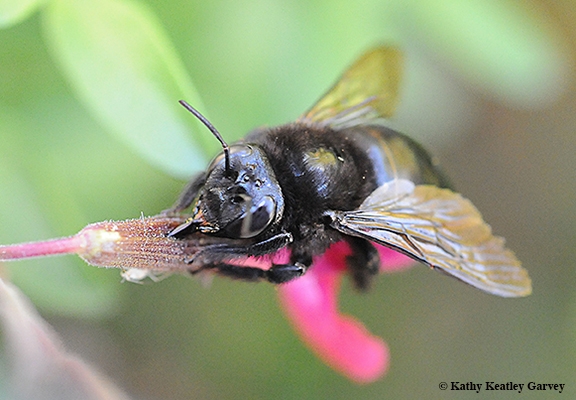
A female mountain carpenter bee, Xylocopa tabaniformis orpifex, pierces the corolla of salvia to rob the nectar. (Photo by Kathy Keatley Garvey)
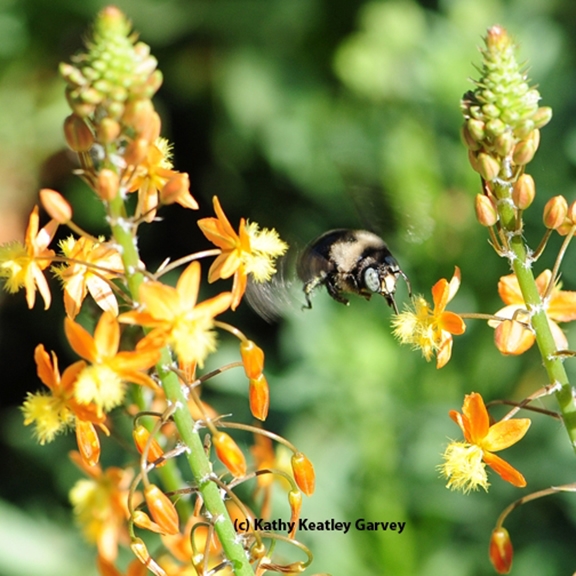
A male mountain carpenter bee, Xylocopa tabaniformis orpifex, heads for bulbine. (Photo by Kathy Keatley Garvey)
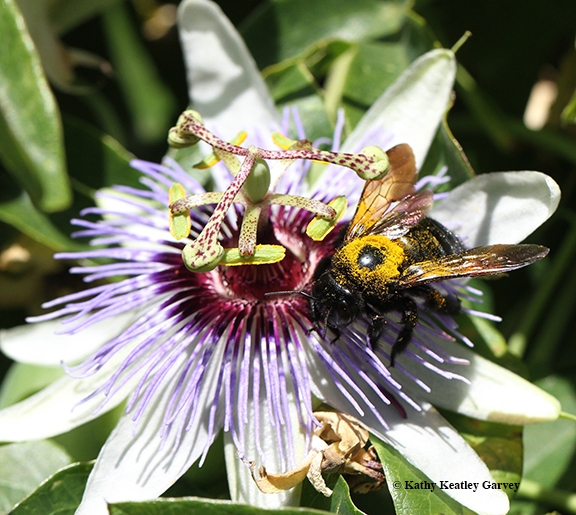
A familiar sight: a female Valley carpenter bee, covered with pollen and nectaring on a passion flower. The female is solid black, while the male of this species is a green-eyed blond. (Photo by Kathy Keatley Garvey)
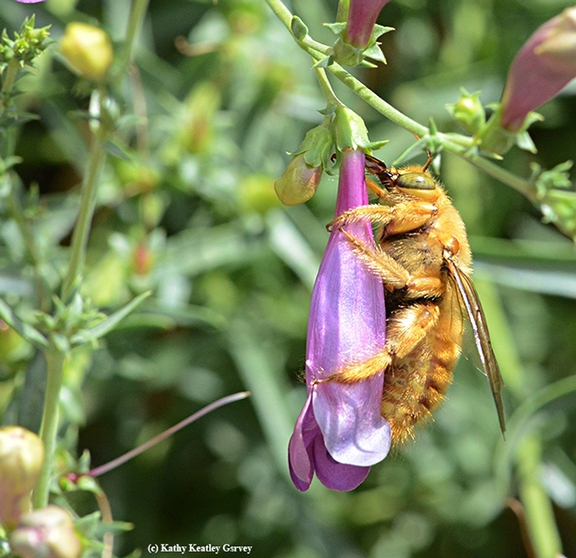
A male Valley carpenter bee, Xyclopa varipuncta, pierces the corolla of a foothill Penstemon. (Photo by Kathy Keatley Garvey)

Female carpenter bees, Xyclopa variuncta, often drill holes in limbs of dead trees to build their nests. This find, from Davis naturalist/photographer Allan Jones, shows a male wintering inside one of the holes. (Photo by Kathy Keatley Garvey)


